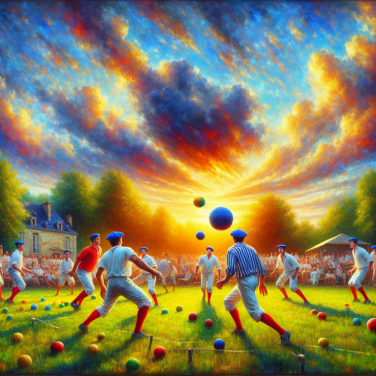The Role of Dimples in Enhancing Golf Ball Performance: A Scientific Perspective
Golf balls are subject to the profound laws of physics and aerodynamics, and the presence of small indentations called dimples play a significant role in defining the game's direction and distance. These dimples may appear mundane to the untrained eye but from a scientific perspective, their role in defining a ball's flight and range is substantial.
Many might wonder why manufacturers don't just produce smooth golf balls, which would seemingly fly straight without any air turbulence. To truly understand the reason, it's vital to delve into the aerodynamic properties of both dimpled and smooth balls.
When a smooth golf ball is hit, air flows smoothly around it, creating a large wake area behind the ball. This wake or 'drag' slows the ball down. The larger the drag, the slower the ball travels and the shorter the distance it covers. Curiously, adding dimples to the ball changes the scenario significantly. The dimples create turbulence in the layer of air around the ball which, contrary to what one might expect, reduces the drag and allows the ball to travel further.
This miracle of aerodynamics occurs because the dimples on a golf ball cause the air to circulate around the ball differently. They push the boundary layer of air away from the surface of the ball, causing the air to 'stick' to the ball longer, reducing the wake and, consequently, the drag. This phenomenon is known as the 'boundary layer principle'. The result? The ball flies further.
The placement and pattern of the dimples also significantly affect the golf ball's performance. Two primary factors to consider are the dimple depth and number. A golf ball with fewer, deeper dimples will create more lift but can also cause more drag, while those with more, shallower dimples tend to create less lift but also less drag. The ultimate design is a balance of these two factors. Therefore golf balls typically have between 300 and 500 dimples, each about 0.010 inches deep.
Even the shape of the dimples has been subjected to scientific scrutiny, with manufacturers experimenting with hexagonal and other non-circular dimple designs. However, until now, the traditional circular dimple has proven to be the most effective at controlling boundary layer turbulence and reducing drag.
Read also:
Unveiling the Incredible Impact of Sports Science on Athletic Performance
Unveiling the Aerodynamics of Golf Balls: The Significance of Dimples
Understanding the Science: Why Golf Balls Have Dimples
The intriguing design of the golf ball has raised curiosity with its pitted surface, unlike other sports balls that feature a smooth surface. However, these seemingly weird craters, officially known as 'dimples,' aren't there just for aesthetics; they play a pivotal role in the aerodynamics of golf and how the ball behaves during the game.
Scientifically explained, as the golf ball with dimples moves through the air, the dimples create a thin turbulent boundary layer of air that clings to the ball's surface. This layer enables the smoothly flowing air to follow the ball's surface a little further around the backside of the ball, thereby decreasing the size of the wake. Smaller wake equals less drag, which equates to a longer flight.
A smooth ball with no dimples, paradoxically, generates more air resistance and slows down more quickly. This behavior is due to a phenomenon called 'air drag.' When a smooth ball flies through the air, a wide "wake" or area of turbulence is created behind the ball. This wake causes the ball to slow down since it's as though the ball is continuously hitting a hard wall of air pressure.
The introduction of dimples into golf ball design was a game-changer. Dimples intensify turbulence in the boundary layer, ensuring that the air adheres to the ball's surface longer, thereby reducing the air drag. The result is a golf ball that can travel at high speeds over long distances.
The size, shape, and pattern of the dimples also play an essential role in the ball’s flight. Manufacturers have experimented with these variables extensively to find the ideal balance, and it's why modern golf balls usually have between 300 and 500 dimples configured in various patterns.
So, contrary to the initial belief, the surface's roughness, due to dimples, reduces the air drag as it travels, enabling the ball to fly further. It's a perfect example of science in action in sports and how scientific understanding and applications can significantly impact a game's dynamics.
Thus, dimpling is a real science; it's the key to getting the best aerodynamics out of golf balls. As the research and innovation continue in this field, golfers can look forward to more advanced golf balls designed for better, longer, and more accurate shots.




